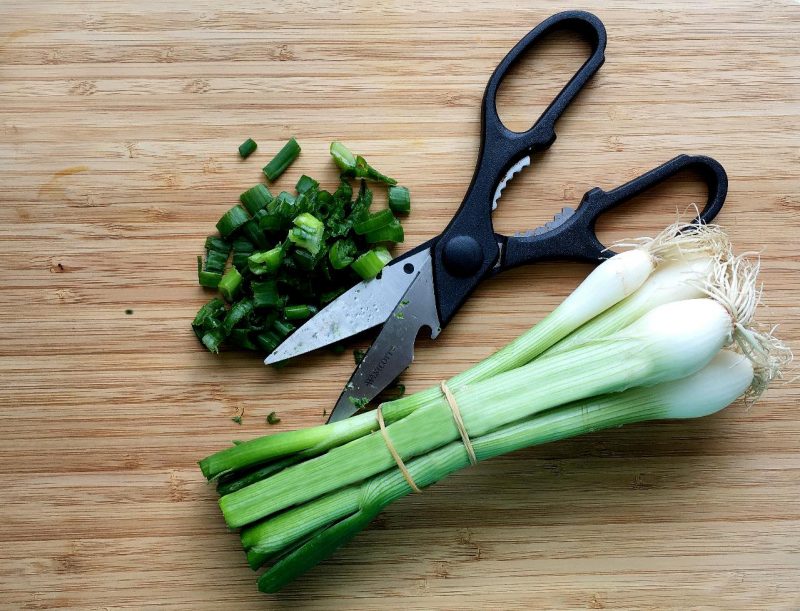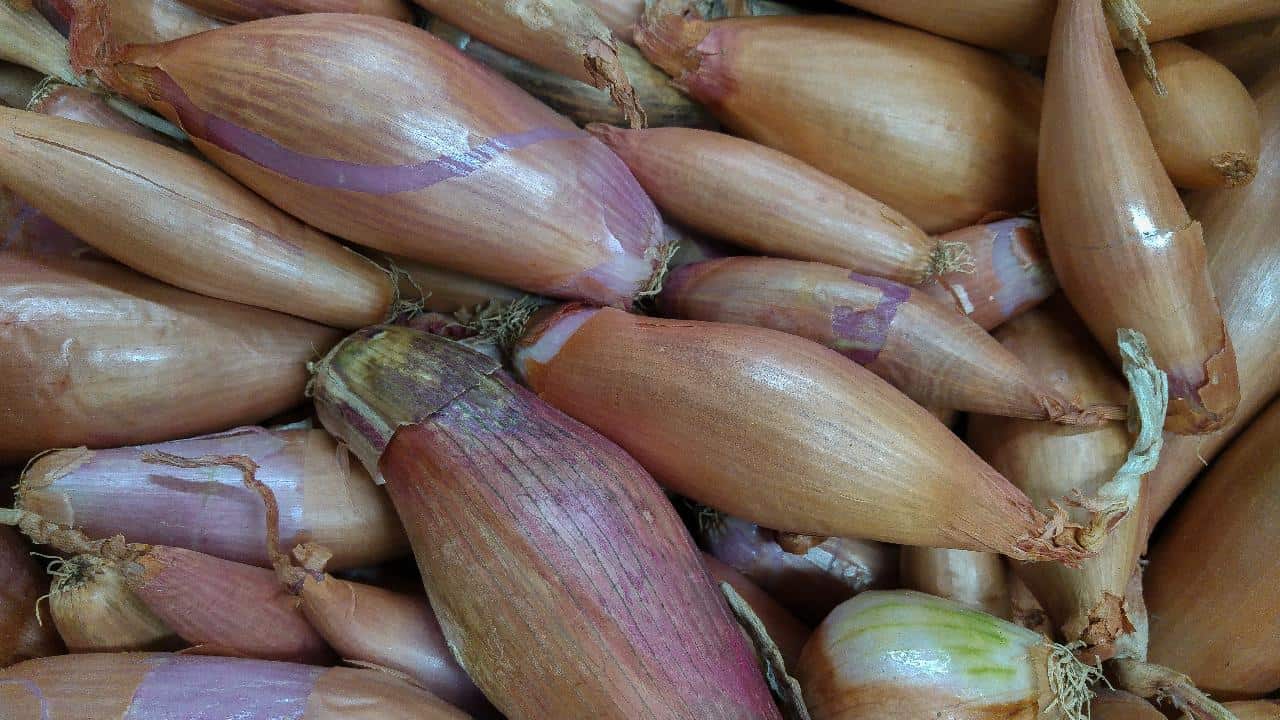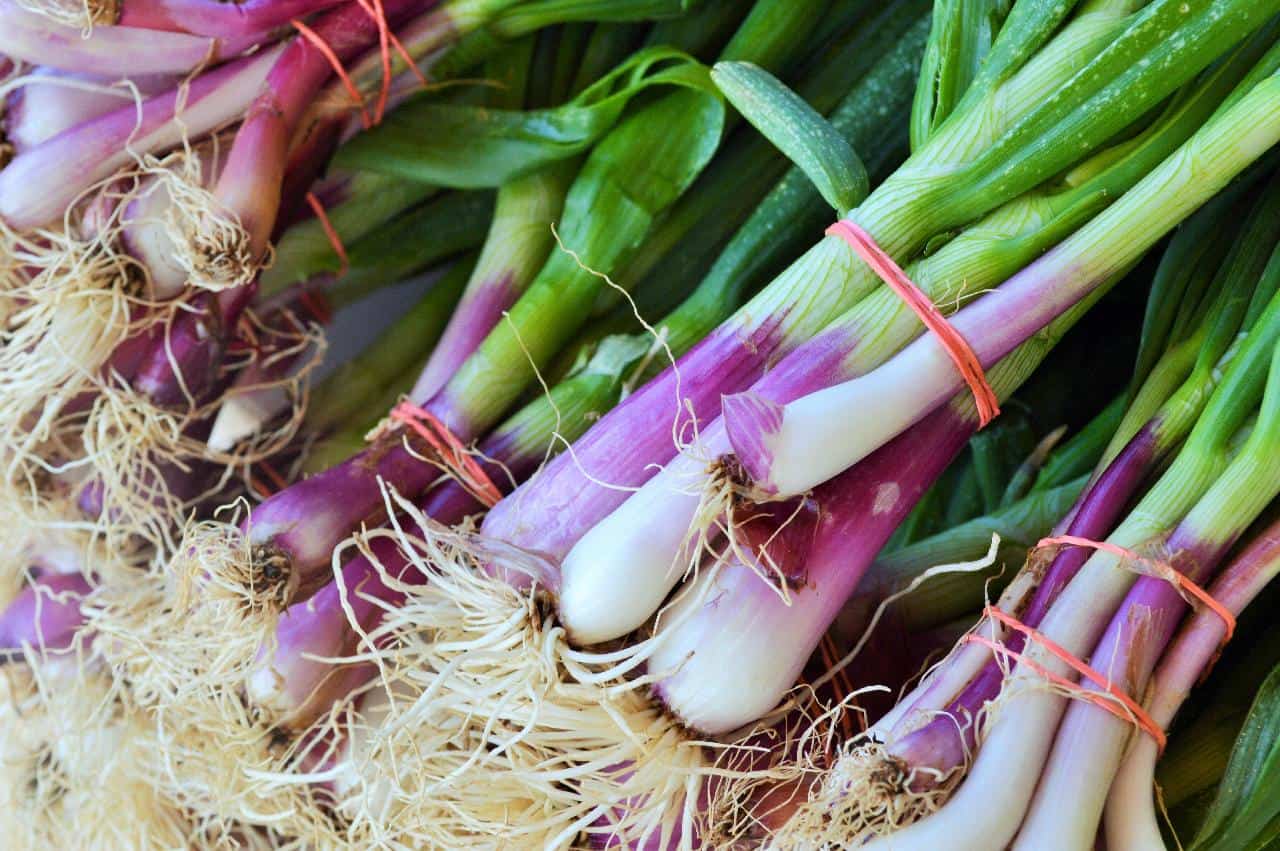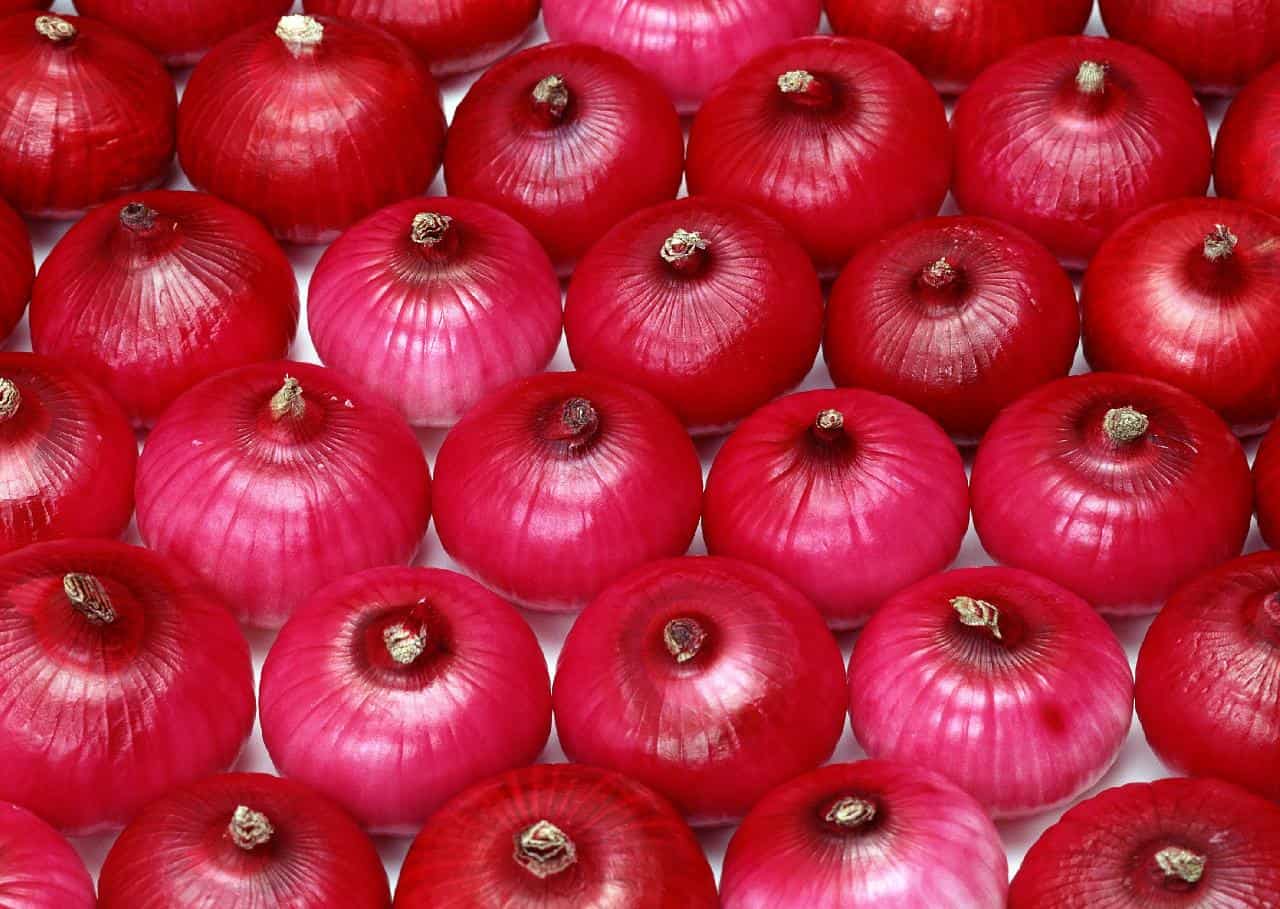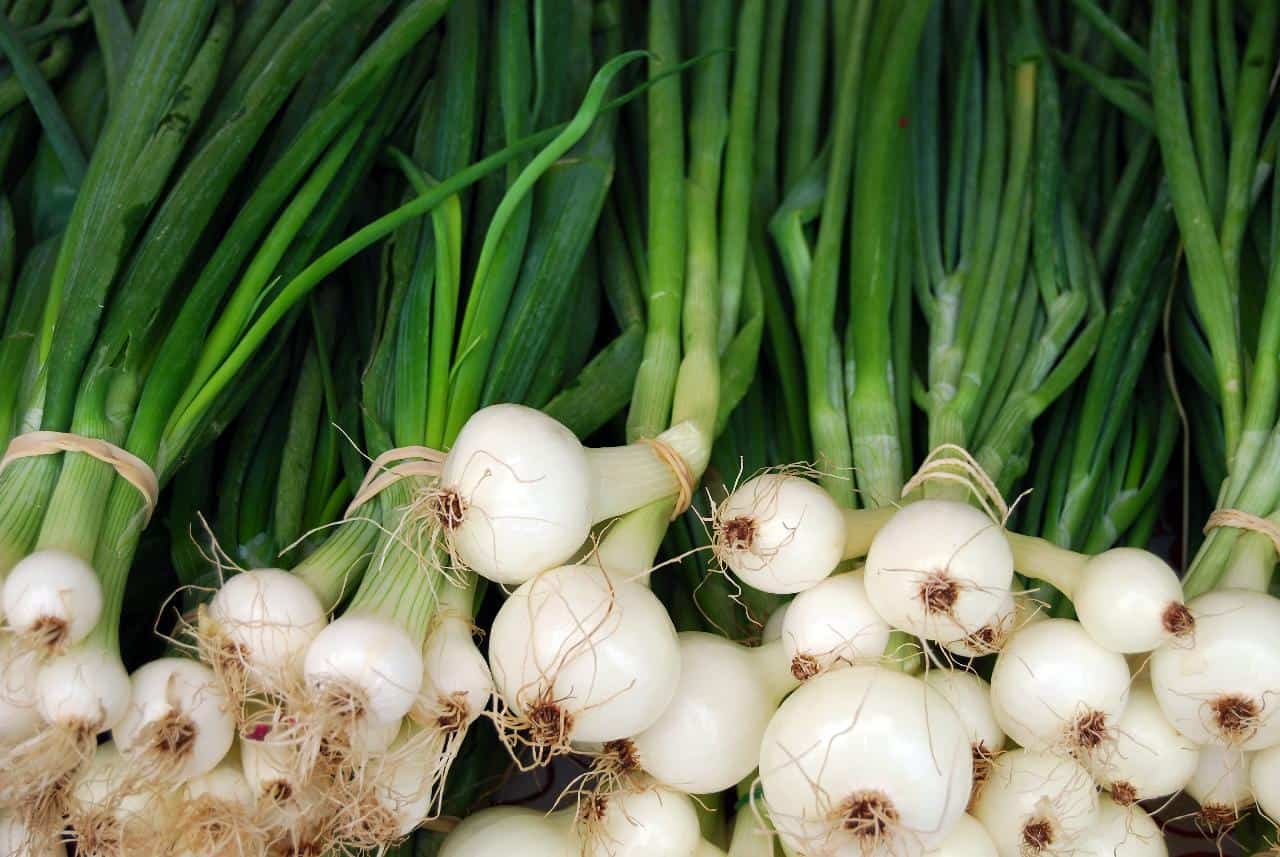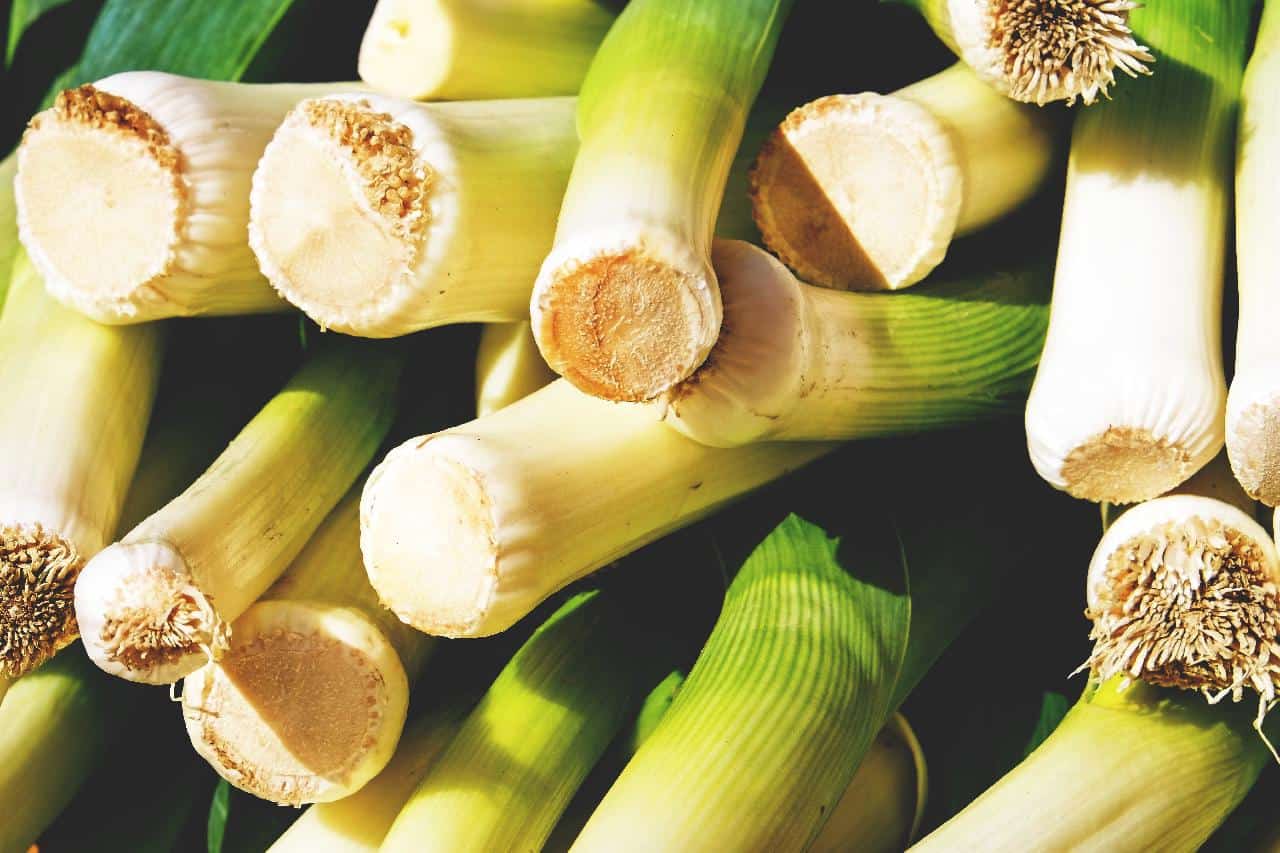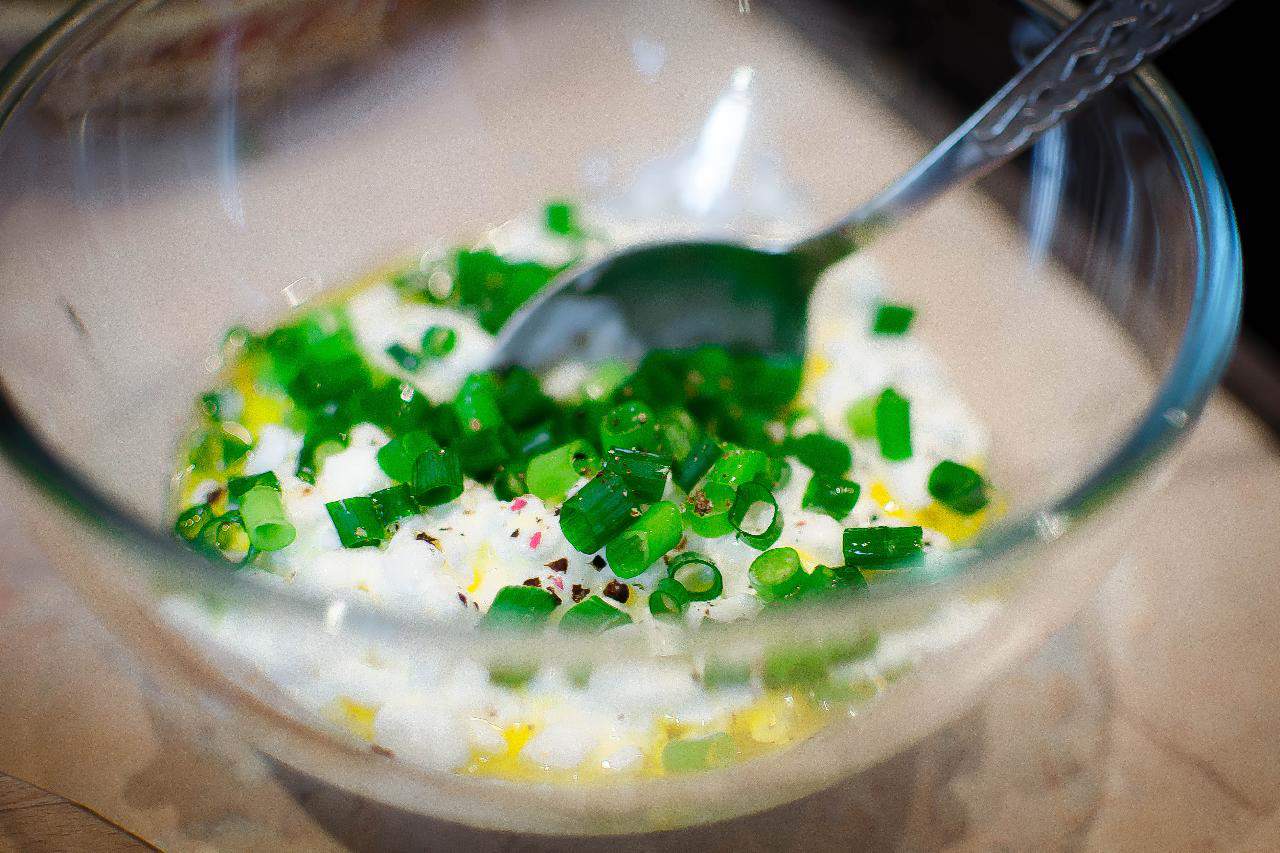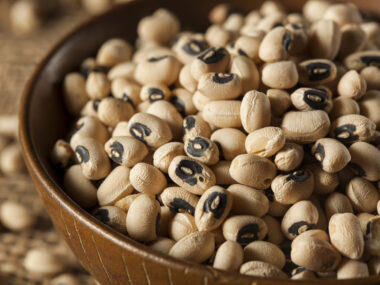Vegetables are part of our daily eating habits. Lunch is not complete if there is no fresh salad before the main dish. One ingredient that fits perfectly in all courses is an onion. Green, leafy, red they come in all shapes and sizes and can be found in every household. They are very healthy and that’s why they are one of the main ingredients in most meals.
Spring is one of the best seasons for vegetables and spring onion fits perfectly, even the name says it so. This kind of onion is part of the onion family of course, but it’s actually really different from the other ones.
People tend to be confused because there are many types and are not sure which is used for what. But let’s think for a second, what if there is no spring onion at home or there are none left in the market, can other onions and similar vegetables be used instead?
Can different types of vegetables be used instead of spring onions? Of course! The so-called spring onion is actually the baby of onions and is different from the others that you mostly use as part of your cooking in its shape and size.
Actually, I’ll give you some alternatives that can be used instead of spring onions, which are as healthy and can fit perfectly in your cuisine. Read through the text to find out more!
Substitutes for Spring Onions
As previously mentioned this type of onion is commonly used in many cuisines and it gives a good taste to food. If you are out of spring onions and there is none left in the grocery store, don’t worry I have the perfect alternatives that can help you save your dish. Read through to find out:
1. Shallots
A good substitute for spring onions is shallots. This type of onion also comes from the same species- Allium. They have more mellow onion flavor and they actually grow in clusters like garlic bulbs.
Their taste is somewhat between garlic and onion, actually milder and sweeter. Its structure contains 75 calories, 2.5g protein, 0g fat, 3g fiber, also 5% Daily Value(DV) of magnesium and 7%DV iron, 3% DV calcium. This means that it can easily fit in your recipe.
2. Red spring onions
These onions are the same as the green ones but they have a distinctive red color. You can find them in the grocery stores around February and they last up till June. These are excellent for salads, pasta, meat, and any other meal.
Just wash it off, trim the root end and you are good to go. This red spring onion has basically the same nutrition as the green one, so it means that you can easily replace it without any hesitation.
3. Red onions
They are the odd ones in the onion family because of their round shape and deep purple, red flesh. They are used raw in salads, mostly in cooking, and have a relatively milder flavor. Also, they are very tasty if you cook them on the grill.
You can easily substitute the spring onions with red onions because they have 40 calories, 1.1g of protein, 89% water, 1.7g fiber, 0.1g fat, 4.2g sugar. Easy to find in markets and they are commonly used in cooking.
4. Green onions or scallions
Mostly confused with the spring onions are the green onions. They look practically the same and it’s really hard to tear them apart. Actually, the main difference between them is the bulb. Silicon are young green onions, whereas spring onions are older and their bulb is more developed and round.
They have similar nutrition: 32 calories, 89% water, 1.8g protein, 2.6g fiber, 0.2g fat. You can use it in the same recipes as spring onions because they are almost alike and fit perfectly in stews, salads, stir-fries etc.
5. Leeks
Straight bulbs and dark green tops- this makes leeks look practically like an oversized spring onion. They come from the Allium schoenoprasum family. They have long white bulbs with tightly packed leaves. You should be careful and always wash the whole plant before use because it can have dirt like any vegetable.
They have a garlicky taste, the top tastes more like cabbage but the taste mellows when cooked. A raw leek contains 54 calories, 13g carbohydrates, 1g protein, 2g fiber and no fat. This makes it so healthy and an easy replacement for the spring onions.
6. Chives
This is actually very different from all the vegetables mentioned above because chives are actually flowering herbs. What distinguishes them from other herbs is their long green stalks that resemble grass and they have no bulbs.
You can eat chives flowers in salads. They have a mild onion taste and are mostly eaten raw because with cooked the taste can be lost. One tablespoon of chopped chives can contain 0.9 calories, vitamin K, vitamin C, vitamin A, 2.76mg calcium, 8.88mg potassium.
Vegetables are really healthy, but chives contain a variety of nutrients that can help you with some health problems like cancer, sleep and mood, eye health, and many more. I would totally recommend these herbs as a substitute.
Also Check: Scallion Substitutes
Spring onion Characteristics
Spring onions have their defining characteristics- they have leaves, a bulb, and are part of the Allium family. Their leaves are used as vegetables either raw or cooked. This type has a sharp onion flavor and is consisted of two parts: the white part which is more strongly flavored and a green part that is less flavored.
The chopped leaves of the spring onion are used in soups, seafood dishes, and also you can combine them with ginger, garlic, and all types of vegetables and meat.
If you take 1 medium spring onion (100g) it contains 0.2g fat,0.01% low salt, 4.5g sugar, an excellent amount of vitamin C, and calcium. Also, they have fiber, vitamins A and B6, and some minerals.
When you choose them in the market, look for healthy fresh ones with dark leaves. You can find them in grocery stores and unlike the mature onions, you can keep spring onions in the fridge.
Related Question?
What can you do with spring onions?
There are numerous recipes that can be used with spring onions. Here are some examples that can help you with your next meal: Poached chicken with spring onion and ginger sauce, tuna melt with spring onion confit, potato and spring onion pancakes, pork, kale, and spring onion stir-fry, spring onion loaf BLT, etc.
Can you keep spring onions in the water?
Yes, you can. Keep them in water or soil at room temperature and they’ll continue to grow. If you only want to keep them in water, find glass or jar that will keep the heavy plant as it’ll grow upright.
How long can spring onions last?
If you want to keep the freshness, put them in the fridge. They contain more moisture than the mature onions and if you keep them at room temperature they’ll last for a couple of days. But when kept in the fridge in a crisper drawer or sealed they can last up to two weeks.
